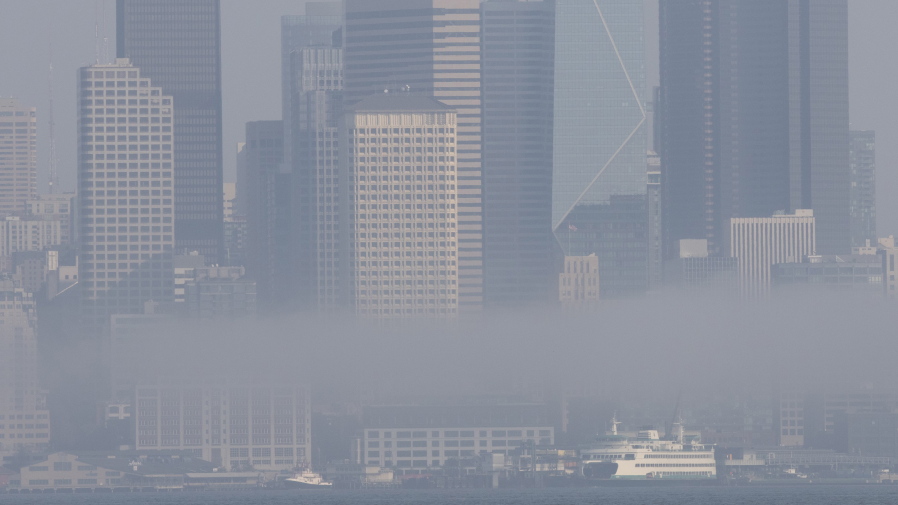Residents in parts of Washington disproportionately impacted by poor air quality are, on average, sicker and die younger compared with the rest of the state, a new report from the Washington Department of Ecology found.
Released Thursday, state researchers investigated health and air quality data from 16 communities with vulnerable populations that are “overburdened” with air pollution, meaning they experience greater health risk than most other communities.
Reviewing data from 2016 to 2020, researchers found people in these communities lived an average of 2.4 years less than people across the rest of Washington.
The report also found older adults in these communities are twice as likely to die from health conditions linked to breathing fine particles, also known as PM2.5, from human-caused sources compared with the statewide average. Older adults who are also people of color are at higher risk of dying from a health condition linked to poor air quality compared with white older adults.
Across Washington, an estimated 728, or about 1.3% of deaths, were attributable to air pollution in 2019, according to an analysis by the University of Washington’s Institute for Health Metrics and Evaluation.
Researchers compiled data from several agencies, including the state’s air monitoring network, the state Department of Health, industry greenhouse gas reports and the U.S. Environmental Protection Agency.
Between 2020 and 2022, these parts of the state experienced an average of 7.5 days per year of air quality that was unhealthy for sensitive groups, compared with the statewide average of 6.7 days annually, state researchers found.
Most unhealthy air quality days were driven by wildfire smoke or dust events. But pollution from other sources — like burning wood for home heating, tailpipe emissions and industrial facilities — also contributed to bad air quality in these communities.
In some of these communities, congested highways ring residential neighborhoods and heavily used railways slice through urban centers. In South Seattle and Everett, planes coming to and from busy airports spray pollutants on communities beneath flight paths. In the Tri-Cities area, prevailing winds push ground-level ozone up against the Horse Heaven Hills, trapping dirty air in the populated basin. In the Lower Yakima Valley, agricultural burning and dust fill the air with fine particles.
Residents in these communities are more likely to be people of color, low-income, have limited English proficiency and little or no health insurance coverage compared with the rest of the state, putting them at greater health risk. All told, more than 1.2 million Washington residents live in these areas.
They also reported higher rates of asthma and chronic heart and lung disease, researchers found. The report notes many of the residents in these areas face overlapping social, economic and environmental inequities that may prevent them from staying healthy or obtaining health care.
“Many individuals and communities fall into multiple groups, increasing risk even further due to the intersectional compounding impacts of air pollution,” the report read.
The report was the first one published since the passage of the Climate Commitment Act in 2021. It will act as a kind of baseline for a series of reports that will be published every two years tracking the state’s progress toward reducing outdoor air pollution and greenhouse gases and improving health.
“The findings in this report underscore the importance of the strong air quality and environmental justice provision contained in the Climate Commitment Act,” said Laura Watson, Ecology’s director, in a statement.
In October, the state’s Department of Ecology announced it would install 50 new air-quality monitors in these communities to gather more data. Some community advocates and environmental researchers have said the expansion doesn’t go far enough to help communities hard hit by bad air quality.
The harmful health effects of poor air quality are numerous and well-documented. In addition to relatively minor health impacts like eye irritation and scratchy throat, short- and long-term exposure to air pollution can contribute to a host of diseases and health outcomes, and even premature death.
Researchers have found air pollution may elevate the risk of children developing asthma, exacerbate existing cardiovascular diseases in adults and reduce lung function in both children and adults. Poor air quality can be especially hard on children, older adults, low-income people, outdoor workers, people with existing health conditions, and people who are pregnant.



